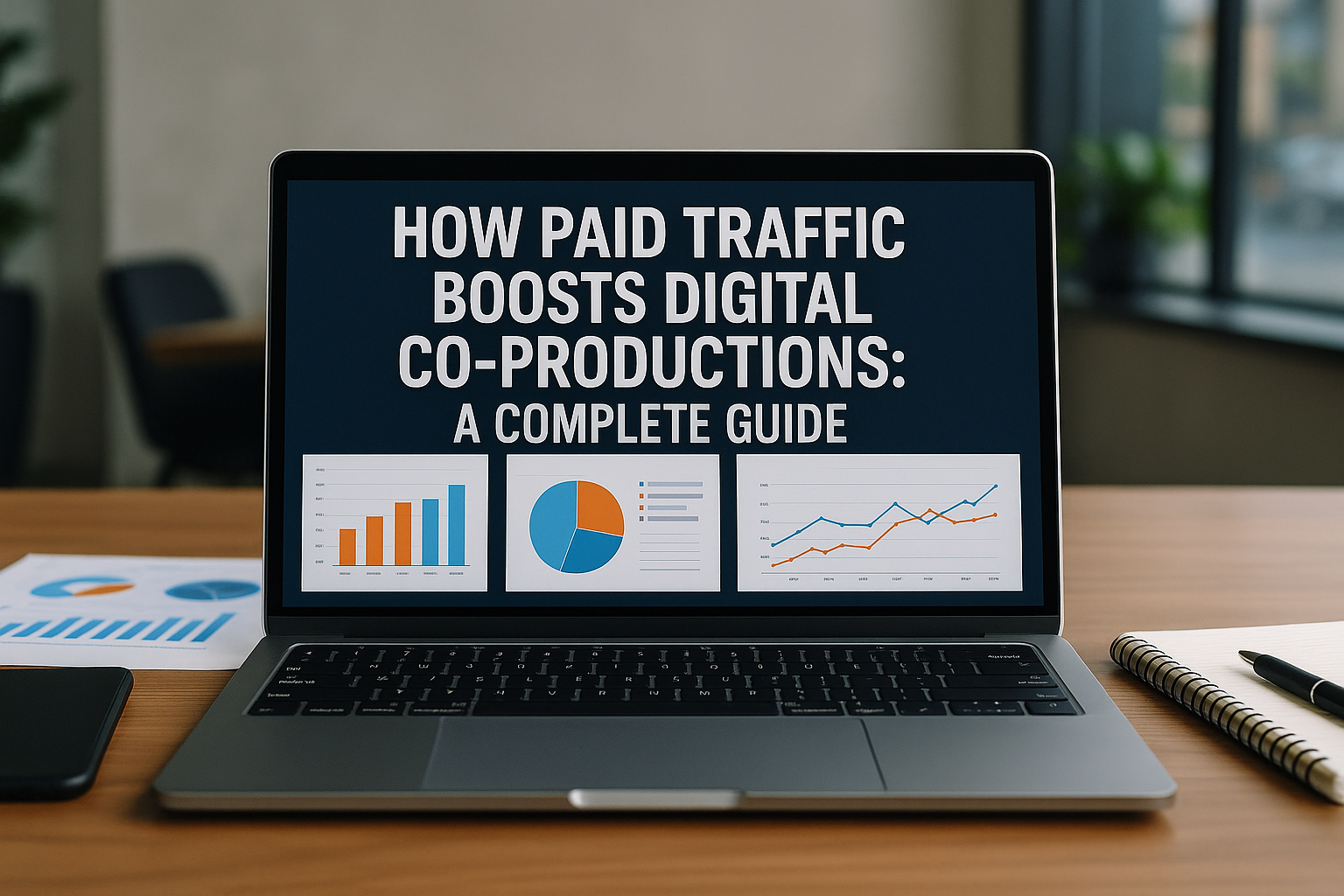In today’s digital landscape, co-producing online products such as courses, ebooks, or memberships is a thriving business model. But to truly scale these projects and generate consistent sales, relying solely on organic traffic is no longer enough. That’s where paid traffic comes in — the fuel behind many successful co-productions.
In this article, we’ll explore how paid traffic can significantly elevate a co-production, how it works, and how to implement it strategically to achieve better performance and higher ROI.
What Is Paid Traffic?
Paid traffic refers to visitors who land on your website or landing page as a result of paid advertisements. These ads can run on platforms like:
- Google Ads
- Meta Ads (Facebook and Instagram)
- YouTube Ads
- TikTok Ads
- LinkedIn Ads
Unlike organic traffic, which takes time and depends on algorithms or SEO, paid traffic gives you immediate visibility to a targeted audience — ideal for launching or scaling digital co-productions.
Why Paid Traffic Matters for Co-Productions
Co-productions involve more than one person — typically a content creator (producer) and a marketing expert (co-producer or traffic manager). Each party brings unique strengths to the table.
When it comes to reaching new audiences and driving conversions, paid traffic is one of the most powerful levers a co-producer can use. Here’s why:
- Speed: You don’t have to wait months for SEO to kick in.
- Control: You define the audience, budget, and goals.
- Scalability: Once something works, you can pour more budget into it.
- Predictability: With enough testing, you’ll have data to forecast results.
Setting Up a Paid Traffic Strategy for Co-Productions
Let’s break down the step-by-step process to get started with paid traffic in a co-production context.
1. Define Clear Goals
First, understand the objective of the campaign:
- Leads for a webinar or launch sequence
- Sales of a digital product
- Engagement for brand positioning
- Traffic to content or free materials
Every campaign should serve one clear, measurable purpose.
2. Know Your Audience
Without knowing who you’re talking to, even the best ads will flop. Use the producer’s insights to define:
- Pain points of the ideal customer
- Interests and behaviors
- Demographics (age, gender, location, etc.)
- Language and tone they respond to
Create buyer personas and test ads with these personas in mind.
3. Choose the Right Platform
Different products perform better on different platforms. Here’s a basic guideline:
- Facebook & Instagram: Great for emotional storytelling, broad targeting, and lead generation.
- Google Ads: Ideal for products with search intent and high urgency.
- YouTube Ads: Best for visual or educational content (like online courses).
- TikTok Ads: Strong for short-form creatives and younger audiences.
Start where your audience already spends time.
4. Create Compelling Creatives
An ad creative includes:
- Image or video (first thing users see)
- Headline (hooks attention)
- Copy (describes the offer and benefits)
- Call to Action (tells users what to do)
In co-productions, it’s smart to use the producer’s face or voice for authenticity. Combine that with strategic ad copy to maximize results.
5. Build a High-Converting Funnel
A good ad doesn’t work alone. It needs a landing page or funnel that:
- Loads fast
- Has clear and persuasive copy
- Shows social proof (testimonials, numbers)
- Highlights the main benefits
- Includes a clear next step (e.g., “Sign Up Now”)
Use tools like ClickFunnels, Leadpages, or WordPress + Elementor for building the funnel.
6. Set Up Tracking
Before running ads, install the right tracking tools:
- Meta Pixel for Facebook/Instagram
- Google Tag Manager for multi-platform tracking
- Conversion APIs (especially after iOS 14 updates)
- UTM Parameters to track traffic sources
These help you measure results and optimize campaigns over time.
7. Test, Measure, Optimize
Start small, then test multiple versions of:
- Headlines
- Copy
- Creatives (images or videos)
- Target audiences
Use A/B testing and analyze the data daily. Scale what works, cut what doesn’t.
8. Set Realistic Budgets
Budget depends on:
- The cost of the product
- The sales funnel complexity
- The quality of the offer
Track key metrics like:
- Cost per lead (CPL)
- Click-through rate (CTR)
- Return on Ad Spend (ROAS)
Common Mistakes to Avoid
- Running ads without tracking results
- Sending traffic to a weak or confusing landing page
- Not aligning the ad with the product promise
- Ignoring the mobile experience
- Scaling too early without data
Avoid these pitfalls to save time and money.
Real-World Example
Let’s say you’re co-producing a course about productivity for remote workers. The producer has already built a great video class and some testimonials. Your job as a co-producer is to scale sales using Meta Ads.
Here’s a basic roadmap:
- Build a lead magnet (e.g., free ebook)
- Run Facebook lead ads to collect emails
- Warm up the audience with automated emails
- Launch an offer with a countdown timer and urgency
- Retarget visitors who didn’t convert
You can easily turn $500 in ad spend into $2,000 in revenue with the right funnel and targeting.
Final Thoughts: Paid Traffic as a Growth Engine
In the world of digital co-productions, paid traffic isn’t optional — it’s essential.
When used strategically, it helps your offer reach thousands (or millions) of people in days, not months. But success depends on planning, testing, and refining your approach.
As a co-producer, mastering paid traffic is one of the best ways to stand out and create long-term partnerships.

